|
|||||||||
|
ARTICLESPOLICING REVOLUTION: ENTER THE BEIJING POLICE MUSEUMThe Beijing Police Museum boasts a collection of 7,000 items, tersely described as "historical documents and objects illustrating the history of the capital's public security forces". Many of these items are "revolutionary cultural relics", to use the standard terminology, intended to clarify the identity and role of the police in the history of the People's Republic of China (PRC), a history punctuated and demarcated by revolutionary political movements and mass activities, at least until after the ouster of the 'Gang of Four' in 1976 and the ensuing 'spontaneous' demonstrations that celebrated it. 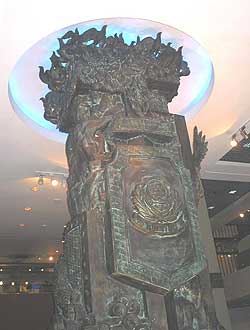 Fig. 1 Column to the Police Spirit (Jinghun zhu) overlooking the vestibule of the Beijing Police Museum . [BGD]
Fig. 1 Column to the Police Spirit (Jinghun zhu) overlooking the vestibule of the Beijing Police Museum . [BGD]
Presenting revolutionary cultural relics in a post-revolutionary period, or rather as part of an ongoing political continuum defined by the rule of the Communist Party, is only one of the dilemmas facing the curators of the Beijing Police Museum. Disentangling the identity of Beijing's 'police' from the plethora of militias, patrols, regulators, people's militias, military police, paramilitary police, the security teams of specific units and other public security organs, as well as from the fire brigade and related rescue services, who appear as players in the PRC's revolutionary history, is another monumental task confronting the curators. Not surprisingly, the displays opt for the simple notion of a metropolitan police force committed to law and order, rather than to revolution, in order to provide the rationale behind the museum's displays. Yet, in the process of removing the burrs of revolution from the social fabric depicted in the displays, the curators of the museum are required to break the narrative thread at many points. The decade of the Cultural Revolution, for example, is documented simply by an elegiac plaque with text and a brief display of a bombing incident. (See below.) The Beijing Police Museum (Beijing Jingcha Bowuguan) opened in July 2001 at a ceremony overseen by Politburo member Luo Gan and the then Minister of Public Security Jia Chunwang. Ironically, the museum occupies a simple neo-classical four-storey building just off Tian'anmen Square that from 1920 onwards housed the Beijing branch of the Meiguo Huaqi Yinhang, the Chinese name for the National City Bank of New York (later called the First National City Bank, and more recently Citibank). The previous incarnations of Citibank are vilified by many Chinese historians for the major role they played in the financial regulation of late Qing and Republican China, which further reduced the country to what Communist historians call "semi-colonial" status. The bank is charged with playing a decisive role in handling China's post-Boxer reparations and thereby effectively directing the Chinese Treasury's activities. The bank's representatives achieved this by bribing Li Hongzhang, China's senior negotiator at the Boxer Protocol reparations meetings, and, later, by milking the Chinese populace throughout the Republican period and the Japanese occupation through the bank's network of operative agents (pibao yinhang), who were authorised to take deposits which the bank, it is said, fully intended to confiscate at a later date. Many Chinese today are still actively pressing claims against the bank. 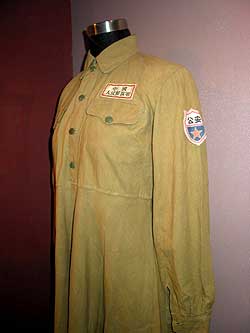 Fig. 2 Unisex police jacket worn in the 1950s (in collection of Beijing Police Museum). [BGD]
Fig. 2 Unisex police jacket worn in the 1950s (in collection of Beijing Police Museum). [BGD]
The museum interiors reflect the secular use of religious and neo-traditional design motives and symbols. The vestibule of the former bank building is dominated by a six metre high stone stele, designated the Column to the Spirit of the Police (Jinghunzhu)—interestingly, the word 'hun', spirit/soul recalls many moments in the cultural history of modern China, the writer Lu Xun (d.1936) having most famously been called 'the soul of China' (Zhongguo hun). (See Fig. 1) And throughout the museum the eclectic taste of the designers is evident. Redolent of the iconography of Bronze Age Sanxingdui, an archaeological cultural site in Sichuan, the high relief carving on the stele encircles a sword drawn from its scabbard and set behind a shield. At the centre of the shield is an illuminated police badge described as "the eye of the law" (fayan, itself a term that has an interesting double connotation as 'fa' also means 'dharma), a motif reiterated by the carving on the left of an ancient guardian beast known only by its classical Chinese name as xiezhi. The right side of the stele is emblazoned with a carving of another mythological animal—the phoenix—but the bird depicted rising from the ashes is intended to evoke auspiciousness rather than rebirth, according to the museum handbook. The text of the Oath of the People's Police is carved on the reverse side of the column. The stele is designed to instil in the visitor a sense of the high moral purpose of policing, a mood echoed by the memorial wall to police martyrs (Yinglie jinian qiang) that occupies the rear of the museum's top floor and brings the displays to a close. The bas-relief memorial wall, made of red sandstone from Sichuan and measuring 18 metres in length and eight metres in height, features semi-geometric motifs set among floating clouds reminiscent of the precisely delineated auspicious clouds that appear on Tibetan thangkas. The red stone is intended to suggest the blood spilled by police martyrs from the time of the establishment of the Beijing Public Security Bureau on 17 December 1948 until 1 July 2001. The carved motifs on what the museum's brochure describes as a "wailing wall bathed in tears" include facial details and hands; the latter evoke mudras signalling generosity, charity and enlightenment, while other hands finger revolver triggers or convey various signals. The elements of 58 figures appear in the bas-relief, a mysterious number explained by the curators as follows: 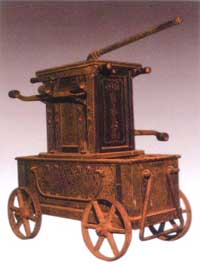 Fig. 3 19th century fire-fighting tender, the oldest domestically produced "modern" fire pump in China (in collection of Beijing Police Museum). [BGD]
Fig. 3 19th century fire-fighting tender, the oldest domestically produced "modern" fire pump in China (in collection of Beijing Police Museum). [BGD]
What is the significance of the 58 figures? [At the time of the museum's opening,] the People's Republic of China had been established for 51 years. In other words, one policeman died every ten months in Beijing during that period of history. Every ten months, a man was cut down before his appointed time! Although most died in the bloom of youth, the oldest was 54 and the youngest, 17. Some of the martyrs died more than half a century ago, others were our comrades-in-arms only months before the memorial wall was designed. The fact that Beijing only lost 58 policemen—all of them males—in the line of duty over roughly a half century period since Liberation is a remarkable achievement, one that in many Western countries would be a source of pride. For example, Craig W. Floyd of the National Law Enforcement Officers Memorial Fund of the USA , describes 1974 as "the deadliest year in [US] police history" recording dutifully that "a total of 271 federal, state and local law enforcers made the ultimate sacrifice in 1974". He adds that "the 1970s was also the deadliest decade in [US] police history, with an average of 222 officer fatalities each year, but the number of deaths in 1974 was still more than 20 percent higher". Of this national figure, nine policemen were killed in the line of duty in Chicago in 1974, seven in Detroit, and six in NYC. Back in Beijing, the historical displays run from the first floor of the museum up to the third floor, effectively framed by the two celebratory monuments to policing. Functioning in a manner similar to front and rear entrance carved guardian figures in Han dynasty tombs, the monuments also serve to exorcise "malign forces" that might chance to emanate from the criminal subject matter of some of the museum's displays. This approach stands in marked contrast to the popular demand for detailed displays of criminals and crimes to which many Western police museum curators must cater. 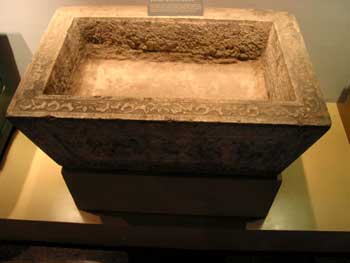 Fig. 4 Horse-feeding trough of the KMT period (in collection of Beijing Police Museum). [BGD]
Fig. 4 Horse-feeding trough of the KMT period (in collection of Beijing Police Museum). [BGD]
The upper two floors of the Beijing Police Museum comprise displays of the tools of the police trade—firearms, detection aids and forensic lab equipment, as well as Qing dynasty instruments of torture and execution, and a display of police uniforms from the last three centuries. (See Fig. 2) The imperial period of history is also included in the display honouring the capital's fire-fighters. (See Fig. 3) A glass-covered model of a prison cell facility housing nearly two dozen inmates provides the visitor with little comfort, although there is an electronic rifle range for the diversion of the children or the young at heart. However, despite its proximity to Tian'anmen Square, the museum seems to attract few members of the general public, most visitors appearing to be cops in mufti. The historical displays touch on fascinating topics, but only for anyone who can read Chinese; moreover, little context for any of the tersely illustrated events is provided. The museum attempts to establish continuity between the KMT law enforcers of pre-Communist Beiping and the incoming upholders of the new law. Combining the themes of inheritance (from the KMT) with ultimate victory (of the Communists) through the displays is not an easy task. Inheritance is conveyed through the display of the stone horse-feeding trough of the KMT police. Traffic control in downtown Beiping was often handled by police on horseback in the 1940s and this KMT-period item is displayed with affection. (See Fig. 4) The green bronze KMT safe deposit box (See Fig. 5) on display also signals that the newly-arrived police contingent gained access to the most sensitive files of the KMT's police force. The Communist victory is, however, most clearly emphasised by the strategic position near the entrance accorded the Japanese 94-model cannon strategically placed before a grainy blow-up of the victory parade in front of Tian'anmen presided over by Mao Zedong. (See Fig. 6) This cannon was one of the 54 placed on the ancient wall to the western side of Qianmen Gate from which the 28-round salute signalling the establishment of the PRC was fired on 1 October 1949. 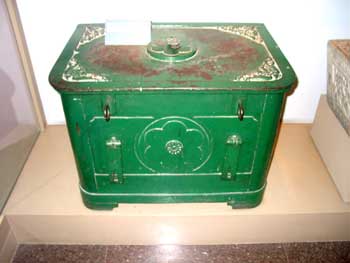 Fig. 5 Safe from KMT police station (in collection of Beijing Police Museum). [BGD]
Fig. 5 Safe from KMT police station (in collection of Beijing Police Museum). [BGD]
Another display case nearby includes the four slim volumes that constitute A General Survey of Beiping published by the North China Social Affairs Department (part of the party's secret service) in November 1948. This pre-Liberation preparatory work makes it clear that the liberation of Beiping (Beijing) was also intended to proceed in tandem with police-supervised social engineering. A photograph of a street demonstration in which "reformed" prostitutes shout slogans denouncing brothel owners and pimps highlights a display indicating that police tasks in the early 1950s encompassed "the elimination of spies, the suppression of counter-revolutionaries, and the elimination of filth" (sute, zhenfan, qinggou). The task of this three-pronged political policing programme included the closure of brothels, the re-education of prostitutes, the elimination of drugs and the suppression of the secret society known as Yiguandao. Why is this group singled out for mention in the Beijing Police Museum, while all other secret societies go unmentioned? Yiguandao, which traced its history back to the Ming dynasty, was originally based in Shandong, but, following the takeover of the Shandong organisation in 1930 by Zhang Guangbi, Yiguandao co-operated with the Japanese invaders, and the organisation was controlled by collaborators. In 1944, the Beiping branches or 'altars' (tan) of the Yiguandao had more than 200,000 members and, following the Japanese surrender, Zhang Guangbi transferred his allegiance to Chiang Kai-shek. As a popular 'faith', Yiguandao made many claims similar to those of today's Falungong. In 1950, the newly-established Beijing Public Security Bureau drafted a plan to deal with the Yiguandao, in coordination with the municipal government. To this end, the police mounted an exhibition in Zhongshan Park in January 1951 outlining the crimes of Yiguandao. The exhibition attracted more than 4,000 visitors a day; a total of 260,000 people saw the exhibition, more people than were actually in the society itself. 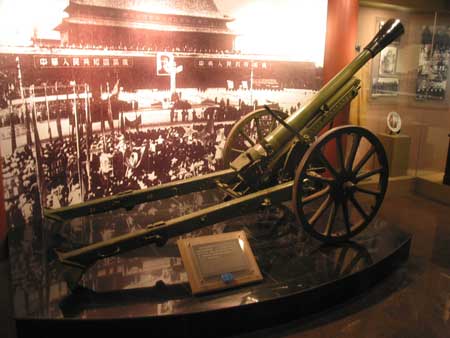 Fig. 6 One of the cannons used to fire the salute signalling the establishment of the People's Republic of China (in collection of Beijing Police Museum). [BGD]
Fig. 6 One of the cannons used to fire the salute signalling the establishment of the People's Republic of China (in collection of Beijing Police Museum). [BGD]
The small photographs in the historical displays indicate that some policing in the 1950s was conducted in tandem with mass campaigns. Despite the clearly revolutionary nature of the entry of the Communist public security forces into Beiping, the police are also presented as political victims in displays covering the Cultural Revolution period. A plain plaque announces that in the Cultural Revolution 74 officers were imprisoned, 974 policemen were placed in labour camps because of definition as 'enemies of the people', and 9,685 were 'removed from their posts' as 'unfit for public security work'. The museum's photographic display of the bombing of the Xidan Market in Beijing is intended to highlight the selfless service the police provided even during the Cultural Revolution. On 3 April 1968, an explosion in the Xidan Market killed five persons and injured 105. At the time of the explosion, sixty policemen were being subjected to a confession and struggle session. Despite the political humiliation to which police officers were being subjected, the display reminds us that the police continued to act in a spirit of public service and, with the assistance of the Public Security Office of Liaoning province, succeeded in arresting the perpetrator of the bombing—Dong Shihou, a farmer from the Chaoyang district of Liaoning "who had been subjected to prejudice because of his unfortunate social origins". Few of the museum's historical displays covering the period from the Cultural Revolution to today focus, however, on 'revolutionary cultural relics', and there are notable gaps in continuity through these two and a half decades. In its treatment of either criminal or law and order issues, the museum focuses on "typicality" in each category of crime. The curators clearly have little time for the most notorious or heinous crimes of the past 25 years, even though the museum might well adopt a more market-oriented 'true crime' approach in the future as does so much of the mainstream print and electronic media. The opening of the Beijing Police Museum followed the switch in uniforms of the Beijing police in the late 1990s from military green to international blue, and the museum itself can be construed as part of China's adoption of a more international policing profile. Beijing's police now wear uniforms and drive in vehicles similar to those of the British police, and the museum similarly reflects this post-revolutionary approach. The museum bookshop displays, under glass, a history of the Beijing police, but I was told that it was only for 'internal distribution' (neibu) unless I could produce an overseas policeman's ID. It is an interesting day in China when 'international' and 'internal' have come to enjoy a shared meaning. [BGD]
|